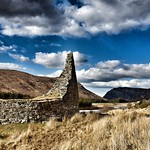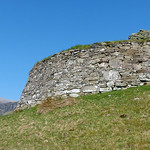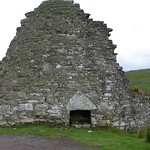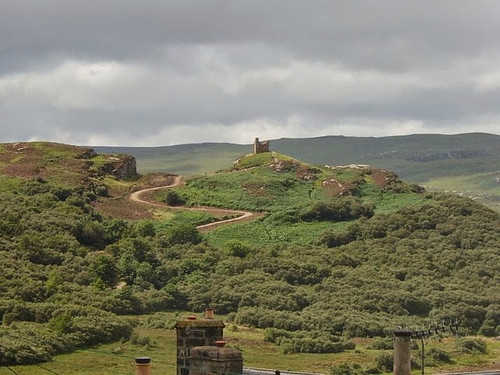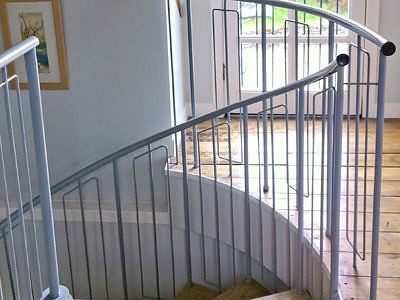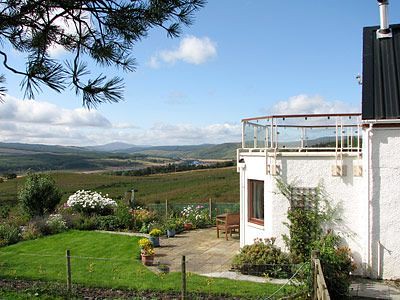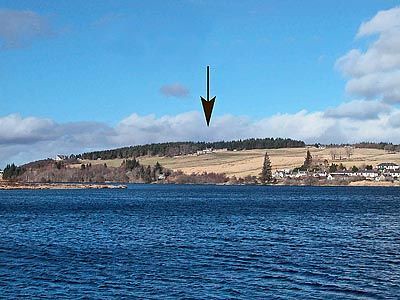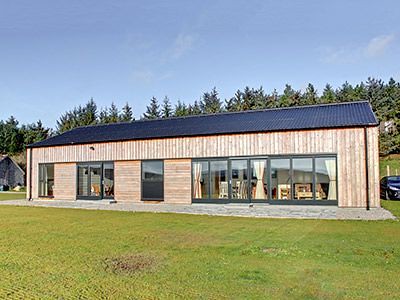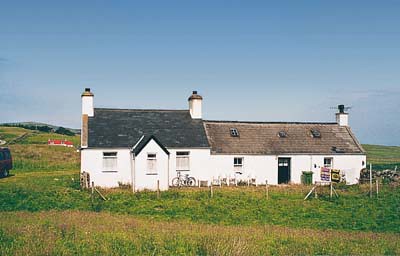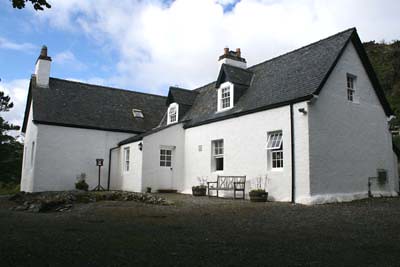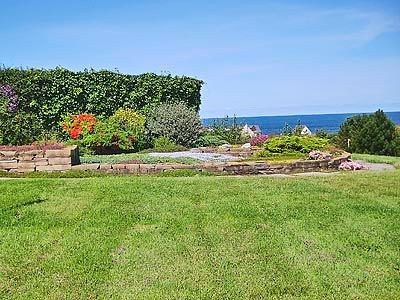Dun Dornaigil
Impressive, well preserved broch that stands almost 7 metres tall with distinctivetiangular lintel about the entrance. On small road south of village of Alltnacaillich
Also known as Dun Dornadilla, this is a well-preserved broch with a distinctive entrance with large triangular lintel, standing to a height of up to 6.7 metres.
Dun Dornaigil is a fine example of a broch which is a type of fortification found only in Scotland. In fact, there are well over 500 of them across the country, the majority in northern and western Scotland and the islands. Brochs emerged during the Iron Age around 2,300 years ago. They stopped being built in the early centuries AD.
Brochs developed from strong circular houses into tall, imposing buildings. They were drystone structures formed of two concentric walls, with a narrow entrance passage at ground level and small cells entered off the central area. A stone stair corkscrewed its way to the top between the two walls.
What remains of Dun Dornaigil is very impressive from the outside, for part of its outer wall still stands almost 7m high. When complete, the broch may well have stood almost as high again. The interior is still filled with collapsed rubble from the upper levels and is therefore not accessible. However, the single entrance doorway into it does remain. This entrance is one of the most impressive broch doorways in existence, courtesy of its massive triangular lintel.
We don't know a great deal about this broch and who lived here. They were ostensibly defensive in their concept and must hav required major resource to build so they were clearly important to the local community. Their construction is ingenious and they remain the most notable construction achievement of the Iron Age. see link for more about brochs
Travel Directions to Dun Dornaigil
Turn of A836 at Hope and travel 5 miles south or so. The Broch is visible from the road.
The road is a narrow single lane C road.
